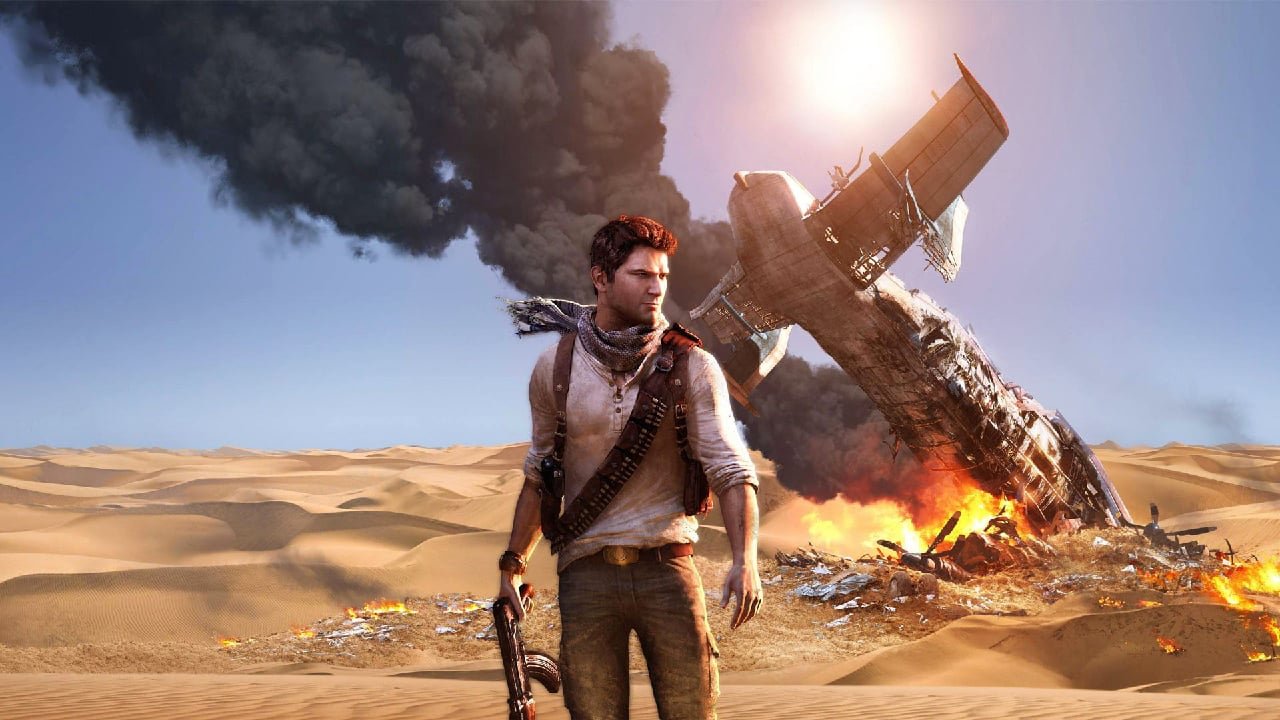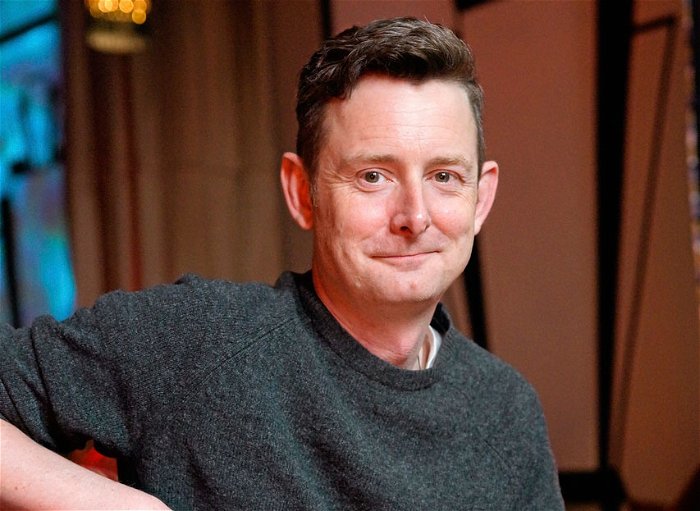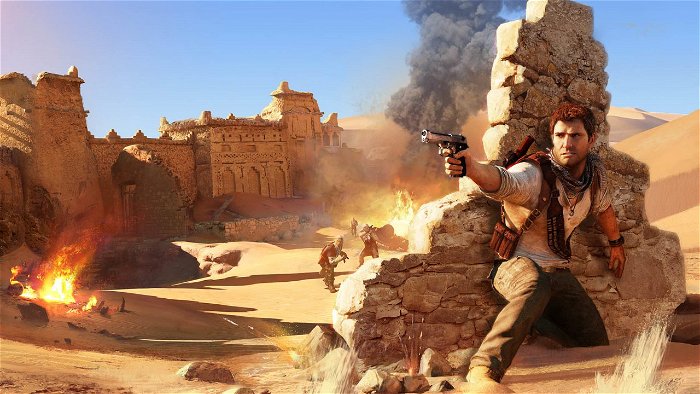These days when people think Playstation exclusive, Naughty Dog and their Uncharted series invariably come up as one of the new flagships. The story of a contemporary, globe trotting, treasure hunting, pirate killing explorer is the new icon for classic high adventure in the gaming medium. It’s also got some of the best writing and snappy acting ever seen outside of a Hollywood film. But what does it take to get that level of storytelling into a game, and why does it seem so difficult for other games to do the same thing? At the Montreal International Games Summit, where he gave the introductory keynote, we sat down with Richard Lemarchand, Lead Game Designer at Naughty Dog to get some insight into one of the leaders of compelling, accessible storytelling in gaming today.
CGMagazine: There’s a considered approach to the Uncharted story that manages to translate into a visceral experience the player doesn’t really think about. How do you manage that?
Richard Lemarchand: That’s a very good question, and I think when about doing something like this morning’s keynote, I almost worry that it misrepresents the actual process. I’ve had the opportunity to reflect on the creative process of making an Uncharted 3, or the other games, and organize my thoughts in a way that I don’t think quite reflects the actual process of making the game. Our thoughts are much more disorganized, we’re really struggling to find our way through the process. It’s always easy to explain something with the benefit of hindsight.
But thanks for the compliments, because we do think very deeply about what we do, about making games. Amy and I, and Evan and Justin Richmond, Jacob Minkoff feel like we’ve learned a lot by listening to the great discourse of other game creators, at GDC, post-mortems and articles on the web. It’s an important part of our process.
CGM: What was the rationale for choosing the less common pulp adventure genre for the game?
RL: I think a big part of the rationale on the part of Amy and Evan and our producers at Sony, was the idea that pulp adventure was a beloved genre with a very long and venerable history, more than 100 years long. It’s one of the earliest popular literary forms, even before science fiction and fantasy. And yet—and Amy said this explicitly—she felt the pulp genre was strangely under-served by video games, which had explored these other territories very deeply. Pulp adventure, in all of its richness, just hadn’t been tackled. They mystery and wonder of the day to day world, the joy of travel, the danger of getting into scrapes slightly beyond your day to day experience. I think they just saw it as an opportunity to do something that would feel really new and different, and yet had this long history behind it that we could draw on.
CGM: Why did it take so long for videogames to stop ignoring this genre?
RL: Well, I don’t think it was completely ignored, there was Pitfall, which was a much older game. And certainly other games along the way have drawn some elements from the world of pulp adventure. I don’t know if the creators of Beyond Good & Evil would agree with this in any way, but I always thought that I detected a certain element of pulp adventure in that game.
CGM: In your talk this morning you mentioned the way Uncharted tells its story, but then cited the open world nature of Rockstar games as another. How do you feel about games that put choice in the story itself, like BioWare games such as Mass Effect?
RL: Yeah, I wish I’d had much longer to talk this morning, otherwise I would have name checked more of the great studios exploring this space, including BioWare, who I think have done excellent, interesting work. I’m very interested in the resurgence of the kind of adventure games that I played a lot in my teens and 20s
CGM: What kind of adventure games?
RL: Well, I am interested in what some call interactive literature, or text adventures back in the day. The work of Emily Short, and Digital by Christine Love, but in particular I was thinking of the SCUMM system games. Those were some of my favourite games as a younger person. And how games like Sword & Sworcery: EP have resurrected that style of play. I really love Sword & Sworcery: EP it’s one of my games of the year. All of these games map out an amazingly diverse set of approaches for story in video games and that’s before we get into much more raw, experiential stuff like Flower.
CGM: What’s your take on the state of narrative in games today? How is it doing interactively? Cinematically? Writing-wise?
RL: I think it’s getting better and better and better… at an exponential rate. I think we’re really hitting our stride in terms of all of the things you name checked there, orders of magnitude better than we’ve done before. I think it’s mainly due to the fact that we have matured as creators. The way that we’re able to realize all these unique visions is incredibly exciting to me.
For my part, I wouldn’t ever come down in any one camp. That would seem to me like saying we shouldn’t write any more poetry, we should only write novels? We shouldn’t write any more great rock songs, we should only write operas. We must do all of these things and we must do them as vigorously and passionately as we can, because all they all help us to articulate our human experience to ourselves. That’s what artists—which I think video game developers are becoming—do.
CGM: Speaking of art, Roger Ebert and his infamous “games can never be art” statement. What are your thoughts on the subject?
RL: I have always felt that video games are a kind of art form. Ever since I was a child, I never saw any contradiction. Most people that know and like games feel the same, and the great thing is, now we have the proof. Now, even the art world, the world of gallery owners and art collectors agree with us, that, at their very best, video games are art. Art collectors are collecting art games, galleries are showing them in exhibitions. My friend John Sharp, who’s a teacher at Georgia Tech and a game designer, and a respected art historian, has catalogued closed to 80 different exhibitions of games as video art, in the legitimate art world, over the course of the last few dozen years. I don’t think we need any clearer sign that games are here. We’ve arrived.
CGM: Those aspects of game as art seem to be focusing on the traditional elements of visuals, music, and others. What about the interactive aspect?
RL: We have to remember that even with the history of art in the 20th century, the idea of the participation of the audience in the unfolding experience of an art work is really not that new. The Surrealists in the very early 20th century, and the Dadaists before them, were interested in art which was made up by audiences as they go along. I’m sure you’re familiar with surrealist games like Exquisite Corpse, which you can play both with literature and with drawings, where you make an art work with the participation of people in the room. And then there’s groups like Fluxus in the 60s and 70s, of which Yoko Ono was famously a part of. They were very interested in games, in breaking down the barrier between the artist and the audience, to create a space for the art to take place in. So I don’t really see any contradiction there.
CGM: The Uncharted series enjoys a “humanness” to its performances that most other game characters don’t portray. Such as Chloe stroking Nathan’s chest in the hotel room. Why did Naughty Dog decide to incorporate that kind of subtlety?
RL: Everyone involved in the creation and implementation of those performances brings something to bear on it. It’s always very difficult to know who had an idea first. I’d wager to say though, that the moment you described came from the actors, more than likely. It’s not until we get the actors in the same physical space, and we’ve rehearsed the scenes with them that they have an opportunity to contribute ideas. Working together with Gordon Hunt, who is our director of motion capture, who’s a respected director of actors with many, many years of experience… he’s worked in television and film, animation voice over, and lots of direction for games… He and Amy Hennig have actually been working together all the way back to the Soul Reaver games in the late 90s. Gordon’s work is very instrumental in helping the actors to find their way through to the performances. So yeah, it’s one of those things, all the parts have to be in place, for those moments of magic to emerge.
CGM: Why are those moments allowed to exist in an Uncharted game, when most other games might leave it “on the cutting room floor” because it doesn’t contribute to gameplay?
RL: I think it’s because it’s really hard to do this stuff. It’s hard to find those moments and preserve them. And we’re not the only developer doing stellar work in this field, Rockstar games are absolutely incredible in terms of the quality of the writing and the performances. It’s the same with Rocksteady’s games, and BioWare’s games, and I could go on and on…
But yeah, I think it’s just really difficult. This stuff is predicated on a lot of really subtle, nuanced, human business. Even we struggle with finding the right moments to put in the right places, in order to achieve an experience for the player that’s rich, and filled with the right kind of emotion.
CGM: How did the decision to make Nathan Drake vulnerable and flawed come about?
RL: I couldn’t say who originally came up with the idea, but I do know, having worked with Amy for a long time, that this is an ongoing interest of hers. If you look at the Soul Reaver games, the heroes of those games, even though they’re super-powered, they are, both Raziel and Kain, guys who struggle with themselves. In part because they’ve become monsters. This points to Amy’s interest in that aspect of human experience. And she’s done a really great job of bringing those ideas of vulnerability and characters you can relate to, because they’re completely confident, because they don’t feel like they have all the answers, which is something that nearly every human can relate to.
CGM: Do you think there are any other ways to achieve this connection to characters aside from vulnerability?
RL: Well, vulnerability itself is a loose term, it’s very wide ranging. We’re all vulnerable in very different ways, about different subjects. Some men find it easy to cry in public, others impossible, and they might create an emotional connection with the people around them in another way. Maybe through a generosity of spirit. That’s why I like this concept of vulnerability, it encompasses so much.
CGM: Why do you suppose that topics like politics and romance are so prevalent in other media, but not in games?
RL: I actually have a prediction to make. Romantic comedies will actually be one of the boom growth areas for video games in the 21st century.
CGM: Why do you think that? I asked the same question to David Jaffe a while back and he had a similar response.
RL: I think that… I wonder if I even heard David say that? Maybe I’m stealing his idea… apologies, if I am, David! I know that I’m not the first person to come up with this, and I heard someone else say that they found it surprising that romance wasn’t a successful genre in video games since romantic comedies have always been so popular in other forms of media.
I think both romance and comedy are very delicate subjects. They have to land just right for the audience in order to come off. But I make my prediction with such confidence because I think we’re hitting our stride so well, in terms of our ability to create very subtle, nuanced experiences for players through play mechanics as well. Not just through content, or a certain piece of music, or a witty piece of dialogue, but I think we’re going to find a way to do it through interactive play mechanics.
CGM: How would you make something like that work through mechanics?
RL: I guess the way I think about it would be through novel user interfaces. I was at a game festival called Game City, in Nottingham in the UK last week, and the subject of different kinds of interfaces came up. And it just strikes me that we have all of these great tools at our disposal now for players to interact with our games in a host of ways that aren’t just using a controller. I think we’ve barely begun to discover how to use them in interesting ways.
So you can imagine, for instance, some kind of biometric face tracking system. It might have great interplay with a game where you’re trying to woo someone?
CGM: The Uncharted series isn’t afraid to stop the roller coaster of action with quieter moments. Why are you willing to put players into these quieter moments rather than just keep a non-stop barrage of action, like exploring the Nepalese village in Uncharted 2?
RL: I’m not quite sure who came up with the idea for the peaceful village, but I think it was probably Amy and Bruce and Neil Druckmann, my co-lead game designers on Uncharted 2. As soon as I heard about the idea, I seized upon it as something I felt, very passionately, that we should do. I actually ended up being the game designer on that sequence, so you’re asking the right person. Some people at Naughty Dog were sceptical that it was going to work in the game, ‘cause the interactivity was so constrained there. We’d taken [Nathan Drake’s] jump away from him, he couldn’t run, he didn’t have a gun, so he couldn’t pull one out. He could still punch, but if you tried to punch the villagers nothing would happen.
And in the play tests, it happened over and over again. The first thing that players would do very often is run straight up to a villager and try and punch them. And I wondered about this, I was very interested in this, and I very quickly hypothesized that they weren’t trying to hurt the villagers; but they discovered that they couldn’t jump, they couldn’t shoot, and their next primary interactive verb was “punch.” They were really just trying to interact with the system, testing the boundaries. So we hooked it up, so if you did do this, and tried to punch a villager, Drake would instead shake hands with them, or wave at them, or nod hello to them. And in the very next play test, I saw players do the same thing, they’d run up—and the players had been disappointed before, when nothing happened, the villagers simply didn’t respond in the first play test—the next play test, when the players tried to punch the villagers, and Drake shook hands with them instead… The players kind of… lit up, with delight. I could see them grinning to themselves, and looking around the room to see if anyone else had seen this wonderful thing that had just happened.
That was a wonderful experience for me, because I think that kind of curiosity, that desire to understand the system, in the new set of circumstances a game designer might present to a player, is a very natural, very human kind of curiosity. When you reward it like that, great things can happen. And then we put loads of spot animations all throughout the village, and we had to work very hard to do that, because it was quite close to the end of production, and I was very grateful to the animators and artists who helped to settle all that. They really went the extra mile to create this experience that, if you explore it, if you use your curiosity, can be very rich. And then of course, when the game was released we were delighted by how many critics and reviews called out this sequence as particularly positive.
CGM: There’s a poignancy to it that you don’t expect in an action game, and it comes out of nowhere.
RL: And the real use for it is when you then go away, adventuring with Tenzin in the mountains, having healed you, having nursed you back to health, he then helps you as you explore this temple complex. And then when you come back to the village, and it’s under attack that has followed you, Nathan Drake, there, you feel so responsible. You have a deep experience, a sense of unhappiness at the plight of the village, and that’s really what that sequence is for.
CGM: So you basically did it as a calculated guilt trip to inflict on the player?
RL: I’m afraid so, yes. [Laughs]
CGM: Effective, but evil.
RL: Yeah, yeah, yeah! Is it evil, do you think?
CGM: Evil in that you make a player looking for escapist entertainment confront a sophisticated emotion in the middle of all the shoot-outs and one liners.
RL: [Laughs] Well, I’m not offended, so please don’t worry. I love to talk about this stuff, it’s very interesting to hear people’s reactions when they hear about these kinds of techniques.
*Originally Appeared in The May 2012 Issue of CGMagazine






